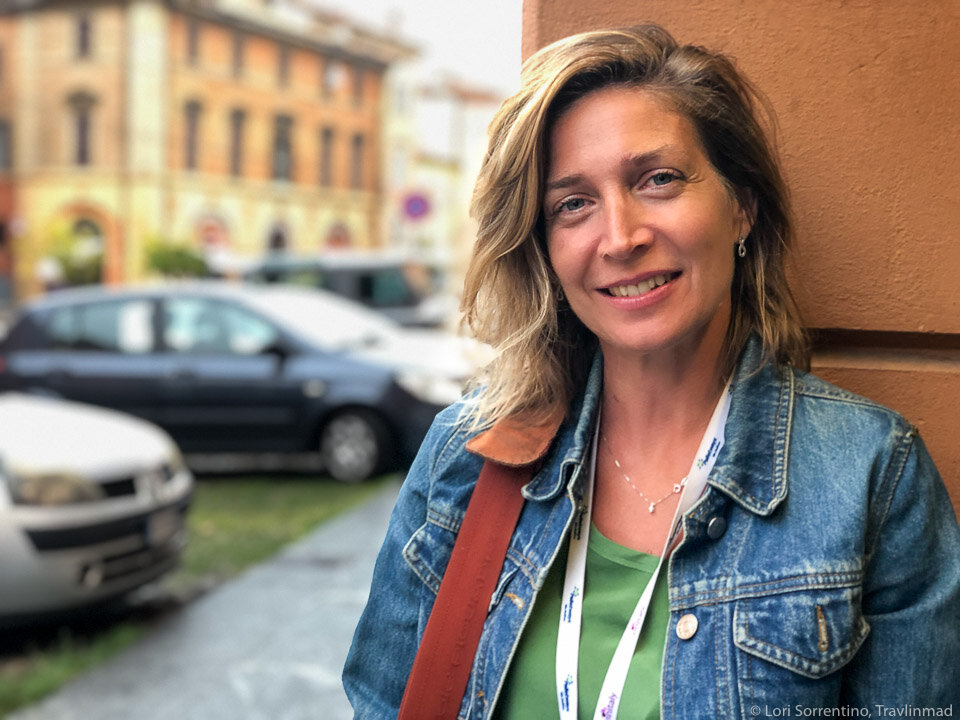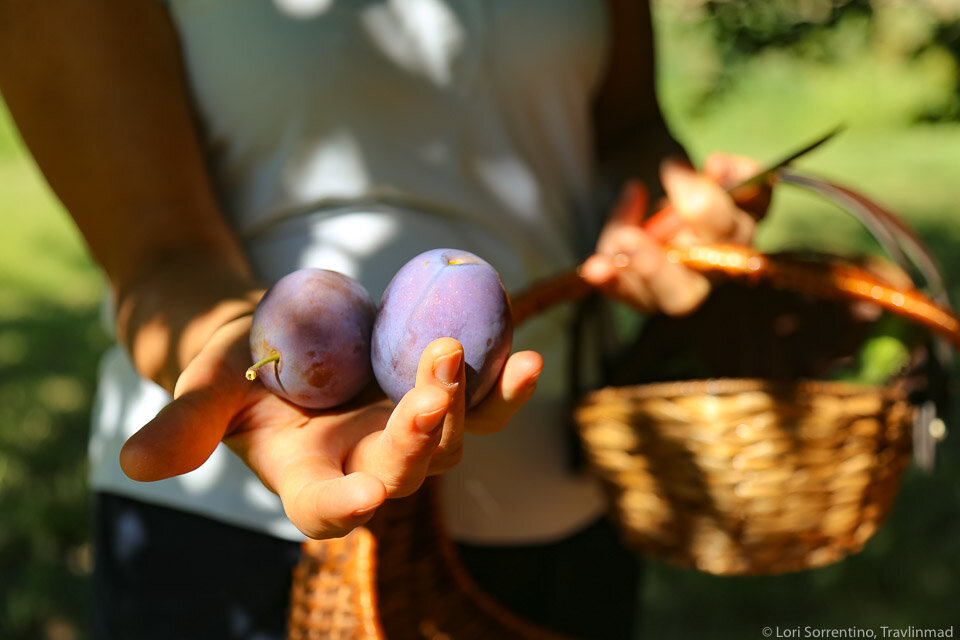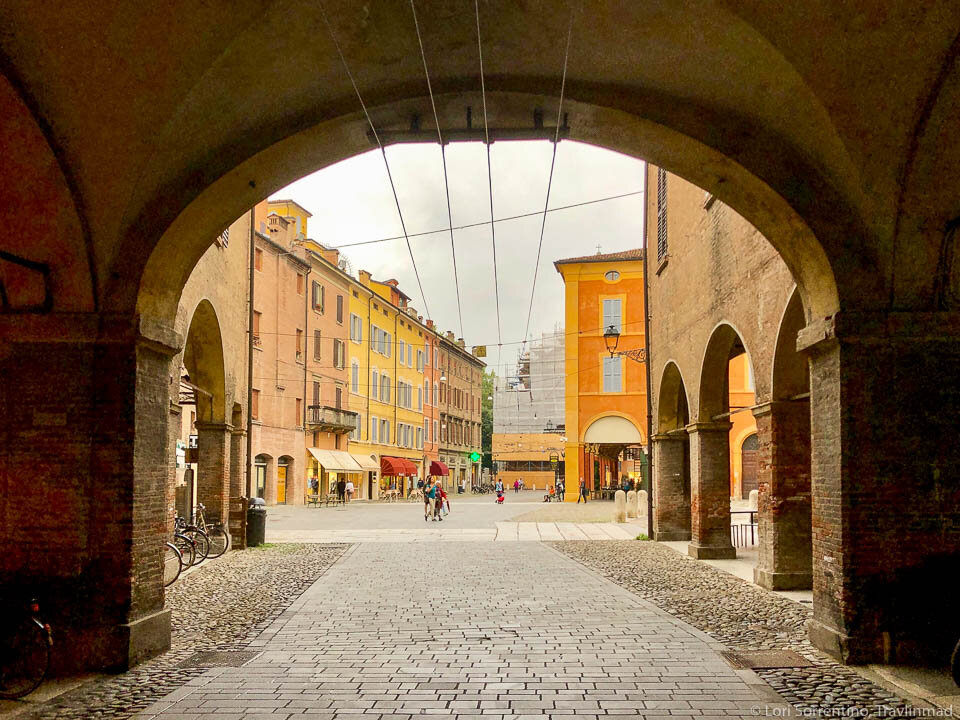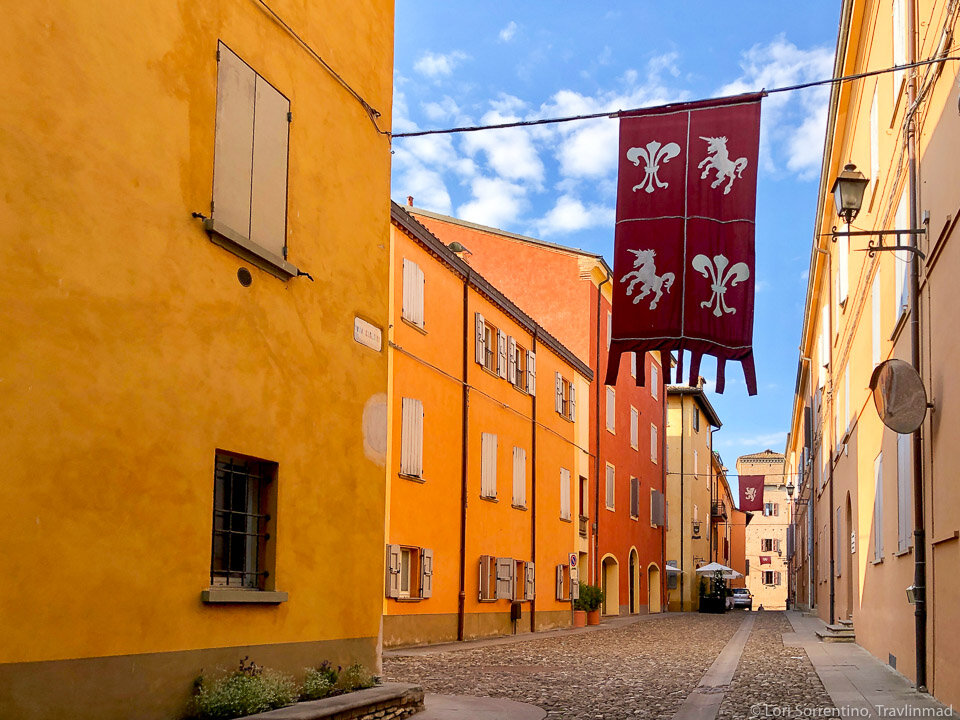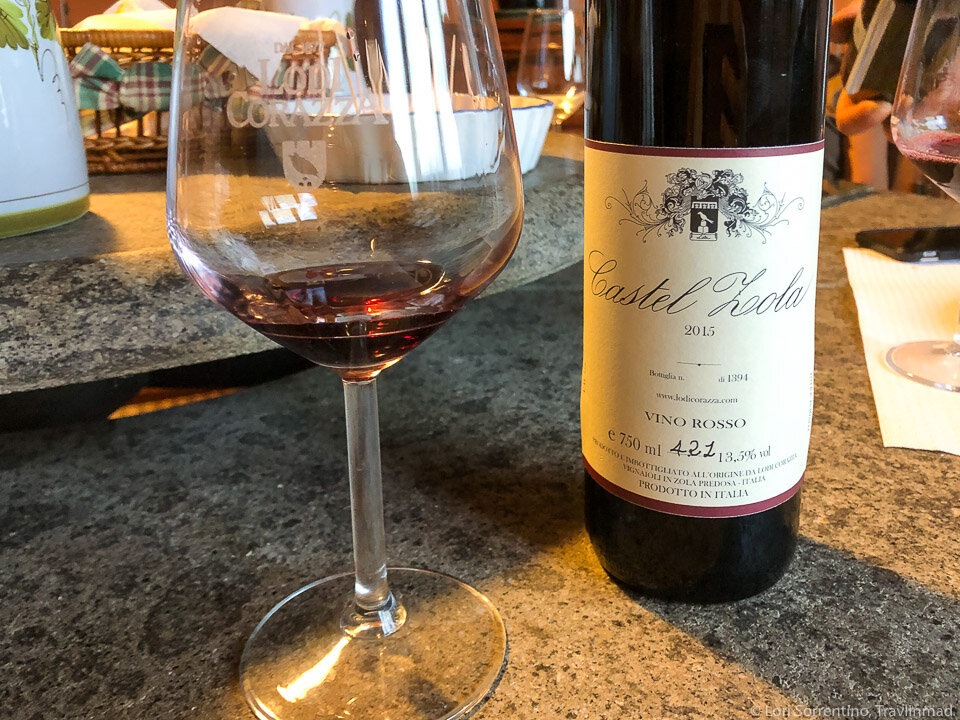Emilia Storytellers: Artisanal Food Tours of Emilia Romagna
Storytelling has been a part of human expression since time began. Woven tales and colorful stories are passed like a torch illuminating the cultural traditions and history of each passing generation.
It’s what we love most aboutslow travel.
I know each of you, right now, can recall your own favorite stories shared through the years by family and friends. Some stories change over time, details are embellished and softened, but they all stay with us — comfortable like a favorite sweater we can’t bear to part with.
Now, think about this for a moment…how many of your stories involvefood?
My fondest memories and family stories always involve food — they’re eitheraboutfood or have been told again and again so often around the dinner table, the dessert table, or the breakfast table, that I assume theytoowere somehow about food.
My sisters and I share stories of our grandmother’s kitchen when we first walked through the front door — her house always smelled of romano cheese — or whatever she’d made us to eat when we stopped by. We marvel at the recipes we’ve mastered, each of us seeming to gravitate to one or two in particular.
If you’ve a Travlinmad follower, you’ve probably read our otherposts about slow traveland heritage travel (like our visit to my grandfather’s hometown in Campania on our first trip to Italy), and why we love traveling for food. And Italy, without a doubt, is one of the world’sbest countries for foodand wine.
Tasting Modena, Italy with Emilia Storytellers
Emilia Storytellers
On our most recent trip to Italy, we were invited to joinEmilia Storytellers缓慢旅行旅游公司,专攻rtisanal food tours of Emilia Romagna. They’re a dedicated group of professional licensed local tour leaders, interpreters and translators, all with a deep knowledge of the food and wine culture of Emilia Romagna.
Katia, the co-founder of Emilia Storytellers, is local to Emilia Romagna. This is her home and she loves to share its wonders with visitors from around the world.
Katia, Co-Founder of Emilia Storytellers, artisanal food tours of Emilia Romagna
So what exactlyareartisanal food tours? After spending a few days with Katia, here is how we’d describe them.
They are fun (and delicious) food tours that gomuchdeeper, and make a strong connection with the people here and their relationship with nature, food and the heritage of Emilia Romagna.
It’s the essence ofslow travelin a food tour. This part of Italy in Emilia Romagna is bucolic and largely agricultural. It’s a region that demands a slower approach to fully experience it. Taking a week-longItalian road trip, or an intimate local food tour is the perfect way to experience this incredible food region!
What makes Emilia Storytellers unique is that tours are private and can be tailor-made. They offer small group half-day tours, full-day tours, or multi-day culinary holidays for 2-12 people, whether you have your own car or need a driver.
In a few days, we experienced several “tours” with Katia and Maddy, one of the Emilia Storytellers, but interestingly they didn’t feel like tours. Instead, it felt like time spent with old friends and new.
Here are several experiences we had over several days.
“I started my company to offer authentic and local experiences, the way I like to travel. True experiences where guests can be immersed in the local culture.”
Artisanal Food Tours
Farm-to-Fork at Fattoria Maria
Our first morning, we drove with Katia toFattoria Maria, a family-owned agriturismo and restaurant near Modena.
安娜和她的女儿大Elisa迎接我们smile and showed us the corral full of chickens, ducks, small goats, rabbits, guinea pigs, and donkeys happily cohabitating. Only the fancy pigeons got their own private roost.
Anna grabbed a large empty basket and before we knew it we were off following her around the property admiring the incredible array of fruit trees and picking handfuls of the biggest fruit I’ve ever seen. Purple Angelina plums, peaches (including fuzzless ones calledpesca noce), pears, and apples. The basket was brimming and we weren’t even at the vegetable garden yet!
We rounded the corner to find an employee loading baskets of Roma plum tomatoes in wooden crates. I was in foodie heaven — fresh tomatoes from the garden! Then came fennel, several varieties of lettuce, broccoli, zucchini and pumpkins ripening on the vine. What a bounty — her empty basket weighed 30 pounds at the end and was the color of the rainbow.
We loved chatting with Anna about food, discovering the similarities between produce in Italy versus the US, and also the different ways in which we prepare it — she was surprised to hear we bake bread with zucchini!
Time to head inside, wash our hands, and learn theEmilia art of making homemade pasta.As we entered, a big sign greeted us with a clear message:
“Future... food for good... sharing the table... common ground.”
Anna brought out two disks of dough made the Emilia way with just3 simple ingredients: flour, water, and egg.The dough was bright yellow and the first disk was cut into 2” squares. One by one, we rolled the squares around a small wooden dowel against a wooden board with ridges. And one by one, the pasta took shape into a wrapped penne noodle shape with ridges.
But now the real fun began — rolling the second dough disk whisper thin to make tortellini and tagliatelle. We each tried our hand at rolling, and rolling, and rolling, this way and that, but it was pretty clear Ana had been doing this a while. She was an expert roller. She knew just what she was looking for and the recipe is exact, 100 grams of pasta flour to 1 egg.
When it was thin enough that we could nearly see through the dough — now rolled to about 2 feet in diameter — it was ready to cut and stuff tortellini before we moved on to the tagliatelle.
There were three bowls of stuffing mixture for our little tortellinis: cheese, pork with mortadella, and spinach. As we worked and stuffed and chatted, and stuffed some more, I remarked how relaxing and meditative this was.
“Fare filosso” Anna said. I looked at her curiously. “It’s what Italians call working and talking together over food.”
We’re not sure if the highlight of visiting Fattoria Maria was making the pasta andfare filosso, or the big glorious feast we had for lunch with all the ingredients we gathered in the gardens and made by Anna and Elisa.
We sat down to lunch with our first bottle of ruby red Lambrusco with anever so slightfizz. First came a charcuterie platter of thinly slicedprosciutto, chunks of freshParmigiano Reggianocheese, and a bowl of freshly fried and puffed-upgnocco fritto.
The second bottle of wine (there were three of us!) was a nice red table wine. Then came thetortellini in brodo, the traditional way to eat the smaller tortellini in a bowl of chicken broth with some sprinkled cheese on top. This is Emilia Romagna’s version ofcomfort food!
Next came small plates ofcheese tortelloni and spinach tortelloni(bigger than the tortellini) sautéed in olive oil. And then the ridgedGarganellipasta I remember rolling, bathed in a beautiful Bolognese sauce.
Oh, and look —tagliatelle! The ones we cut from the paper-thin egg dough, also in Bolognese.
It was all so delicious, and I vividly remember savoring every bite — I didn’t want lunch to end!
Finally, a little sweetness to finish off our lunch — a few bites of a Zuppa Inglese cake made by Elisa (she’s a pastry chef) to end the meal on a sweet note. It’s not made from soup as the name would imply but rather a creamy white layered sponge cake that is delicate with just enough sweetness.
This is another thing I love that Italians do — small dessertbites.Dessert in Italy is generally a small bite or small slice of cake. Not too much, just a sweet ending.
Anna and her family and staff were so welcoming and gracious, and invited us back during the summer when thelucciola, fireflies, emerge and put on their show at night. It’s a deal!
“The natural way... cooking as an expression of creativity and research of what nature offers us during the natural cycle of the seasons.”
Traditional Lambrusco at Fattoria Moretto
In the afternoon, we set off to Fattoria Moretto, one of the Emilia Romagna’s most famous producers ofLambrusco Grasparossa di Castelvetro.Now, we know what our American readers are probably thinking. Lambrusco…really? We get it.
Just trust us on this one, please.
The wines of Emilia Romagna are largely overshadowed by their Tuscan neighbors to the south and Venetians to the north who produce some of the world’s best Prosecco and Valpolicella. Traditionally, Lambrusco has been sold in overseas markets like the US for many years as an inexpensive wine.
Quite honestly, ordering a glass of Lambrusco in the US will draw the same look as if you ordered a Shirley Temple. Order a bottle and they may ask to see your ID! It’s not onlyconsideredbad wine, it usuallyisbad wine. Plus it’ll give you a wicked headache if you overdo it.
But the cheap Lambrusco in the US is nothing like the traditional Lambrusco Grasparossa produced — with pride, and rightly so — in Emilia Romagna. And that’s a shame. It wasn’t until ourfirst trip to Bolognathat we tried a glass of Lambrusco, unbeknownst to us. And we couldn’t have been more surprised!
So when Katia suggested we visit a Lambrusco winery we jumped at the chance. Our tour of Fattoria Moretto, a traditional Lambrusco winery converted us in a big way.
Traditional Lambrusco Grasparossa is only produced is the region of Castelvetro di Modena, and it’s really good. It gets its name, Grasparossa, from the leaves and stems of the vines turning a bright red in the Fall. Sadly, we were just a bit early to witness the Autumn change.
If there’s one thing we’ve learned about Emilia Romagna wines, it’s that many styles are often new and frizzante. They’re not meant to be aged — they are to be enjoyed now. Their wines with a slight fizz — like new Lambrusco and Pignoletto — pair very well with the rich and fatty foods of the region.
Fattoria Moretto是一个小的家庭winery that got its start in 1971. Two brothers, Fausto and Fabio Altariva, along with their father, work 10 hectares of Grasparossa Lambrusco vineyards using organic methods. They originally started making wine for only their family and later for the local area. But when word got out about the high quality of their wines they started producing for the retail market.
It’s a good story, and after tasting their wines, we had no doubt about how the demand grew. Some years they produce a Rosè from Lambrusco. We were able to taste last years edition and it was delicious.
TIPS for enjoying Lambrusco:
Most importantly, buy only very goodLambrusco Grasparossa.
There are also two other Lambrusco varietals —Lambrusco di Sorbarawhich is a light and fruity red, andLambrusco Salamino, a deep purplish red that is either semi-sweet or made frizzante-style. Be sure they carry either a DOP or DOC certification on the label.
Lambrusco is meant to be drunk young and fresh so it is bottled every 2-3 months and should be enjoyed in no more than 8-10 months.
“Parmiggiano Reggiano and Traditional Balsamic Vinegar of Modena: two stories deeply related to Emilia, two harmonious tastes, authentic to these areas.”
A Walking (and Eating) Tour of Modena
The next day we met Maddy for a light Modenese-style breakfast before ourModena food tour.Modena is one of the easiestday trips from Bologna, and just 45 minutes away. The popularPasticceria degli Deiis the place to go for a very local morning experience — cappuccino and gnocco fritto is my newBreakfast of Champions!
But the gnocco fritto we had here was the size of a small football, much bigger than the ones we had for lunch at Fattoria Maria. I had no idea they made them this big! Then off we went to see the cultural and historical sights of Modena. But what we were really looking forward to was eating some of the delicious andtraditional Modena food.
We meandered down quiet streets and watched as the people of the city made their way to work and the streets came alive. Even then, it was still nice and quiet. We passed an occasional tour group admiring a church and taking pictures.
Modena looks like a smaller, less-crowded Bologna, with the same Medieval and colorful architecture everywhere you turn. The one thing that Modena does not have as much of as you’ll find in Bologna, is graffiti. Modena is a beauty, even on a cloudy day!
The cobblestone streets of Modena, Italy
We walked past the Church of San Francisco and onto the quieter narrow street of Via Stella, and Maddy pointed to a simple gold plaque on the wall.Osteria Francescana.It’s not every day you happen upon the most famous restaurant in the world on a quiet side street on a random Tuesday morning.
I waited to see if He (with a capital “H”) would appear but alas He did not. Nor were we able to score dinner reservations this visit. But I will keep trying. Having dinner created by Chef Massimo Bottura is high on myItaly Bucket List.
But it was the perfect time to visit the market so we made our way toMercato Albinelli,所有的一盏明灯mmylocal Italian foodhere. We passed beautiful churches, piazzas filled with neighbors chatting on benches, and interesting shops selling everything from rare spices, teas, and fresh pastry to high end fashions and shoes. Italians love fashion and it seemed Modena was no exception.
Maddy shared the interesting history of Modena and the neighborhoods we passed through including the former Jewish Ghetto. Today, traditional Balsamico di Modena is sold in the neighborhood atLa Consorteriaand we stopped to do a tasting drizzled on some of the fresh parmigiano reggiano cheese we bought at the market.
We moved on toPasticceria S. Biagiowhere we tried local pastries including traditional Torta Barozzi, one of Modena’s most traditional foods.
Later in the afternoon we headed back to the market to join Katia for a last afternoon tortellini making class in Mercato Albinelli with Monika. We chatted as she showed us her technique for stuffing and twisting tortellini around our pinky fingers to get just the right size and tight enough bond.
As we said goodbye, she gave us a cup of what Katia calledtortellino de passegio— tortellinoto-go!I’ve seen Italians walking around with cups of gelato any time of the day, but never pasta. The Modenese are serious about their tortellino. What a great idea!
One delicious treat deserves another so Katia and Maddy followed up with a classic sandwich that we also ate on the go, though after one bite all I really wanted to do was sit down on the curb and drool. The Panino al Cotechino we ate fromBar Schiavoni di Fantoniwas one of the tastiest things we ate in Modena. So many amazing flavors going on in such a small sandwich!
Just when we thought the day was over, Katia had one last surprise up her sleeve. She explained the details surrounding a new tour she was introducing to Emilia Storytellers calledTortellino Trio— learning to make traditional tortellino, eating the delicious tortellino, and finally making tortellino not from pasta, but from another material that Modena has been crafting for centuries — leather. Say what?
Before she could explain we arrived at La Vacchetta Grassa to meet Giorgio and make our own leather tortellino, a keepsake for us to take home. Hmm…aTrio of Tortellino.这太酷了,不是吗?我们的语音识别走食物之旅a was everything we could have hoped for — fascinating, delicious, and so much fun!
Castelvetro di Modena
Later in the day, we headed to the beautifulborgo(a charming small Italian village) ofCastelvetro di Modena, home of the famous Lambrusco Grasparossa di Castelvetro. We wandered around town and watched the sunset reflected on buildings centuries and centuries old.
This small town is a must-see when you’re visiting Modena and Emilia Romagna. It reminded us of a smaller version ofSan Gimignanoin Tuscany, with its brightly-colored gold and russet stone buildings. What a a charming and walkable medieval town this is, with photo ops around every corner.
Katia even introduced us to local photographers (and brothers) Luca and Angelo Nastri Nacchio who showed us some of the most incredible and most Instagrammable spots around Castelvetro. These two brothers are incredibly talented and love showing off their home to visitors and fellow photographers through their blogModena & Dintorni, so check it out.
We drove a few minutes outside in the hills around Castelvetro to watch the last rays of sun light up the small town ofLevizzano Rangonefrom the middle of a vineyard. It must be a popular spot — even a local neighbor was out watching the sunset and chatted with us.
Azienda Vinicola Lodi Corazza
The next morning on our way to Bologna for a few days, we stopped at theLodi Corazzawinery to meet the winemakers, Cesare and his sister Silvia. Together, this brother and sister team manage their family heritage of agriculture and winemaking, focusing on the quality of the grapes and wines they produce, investing in wine tourism, as a testimony to local traditions.
They have been creating wines since 1997 from the generations-old vineyards that have been in their family since 1877.
When we arrived, they were loading the last crates of fresh-picked grapes onto a conveyor belt and into the destemmer/crusher, a machine that removes stems and gently crushes the grapes to prepare them for pressing. The winery has 90 fermentation and storage tanks made of stainless steel, concrete, and wood.
We were surprised to see so many cement tanks being used for fermentation and aging. Concrete has been used in winemaking for centuries and is an ideal material since it doesn’t impart a flavor to the juice and allows only limited contact with oxygen.
How were their wines? So impressive! This small winery packs a big punch with five unique whites and the same number of distinct reds. We’ve become fans of the Barbera Frizzante and Pignoletto Frizzante wines of the Emilia Romagna region and Lodi Corazza has two of the very best we’veeverhad.
But what struck me the most in talking with Cesare was how committed they are to “maintain all the typicity of our land” in every one of their wines. How fantastic it must be to carry on your family traditions through good stewardship of the land and the making of excellent wines from Emilia Romagna.
How Can You Take a Tour with Emilia Storytellers?
Emilia Storytellersoffers a variety offood experiences for small groups of 2-12 people.From exploring Bologna and Modena’sPignoletto and Lambruscosemi-sparkling wines to seeing howtraditional Balsamico di Modenais made, frommaking Emilia’s egg pastato tasting Parma’s King of Salami,Culatello— all of it artisanally produced.
成本:
The average tour with Emilia Storytellers such as theModena Walking Touror theTortellino Triotour is 85€-100€ per person.
A typical tour with a visit to a Parmigiano Reggiano Cheese Factory, Balsamic Acetaia, with Lunch (depending on the number in your party) is 90-100€ per person (Half Day) to 150-170€ per person (Full Day).
Cooking Classes such as theFarm-to-Fork Experienceat Fattoria Maria (above) or a traditionalFresh Pasta Cooking Classrun between 120-140€ per person.
The 4-DAY CULINARY EXPERIENCE can range from 500€ to 800€ per person for 4 days.
This culinary experience can include the following food experiences in the 4 days that can be customized: Parmigiano Reggiano Cheese Factory, Balsamic Acetaia, and Culatello/Parma Ham Experience; a Wine Tour around Modena or the Bologna Hills; a Farm to Fork Experience / Traditional Pasta Cooking Class; a Modena Walking Food Tour or Modena Tortellino Trio Tour; and a Bologna Walking Wine Tour.
Many thanks to Emilia Storytellers for hosting us on several tours. As always, all opinions, stories, and photos are ours alone based on this firsthand experience.



